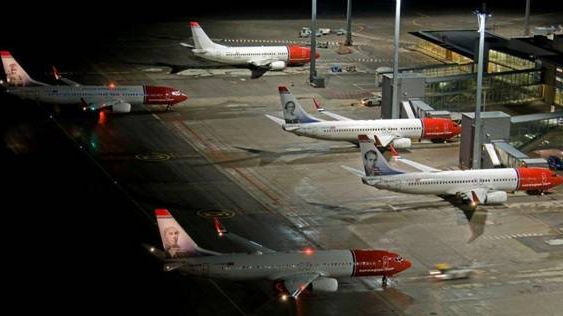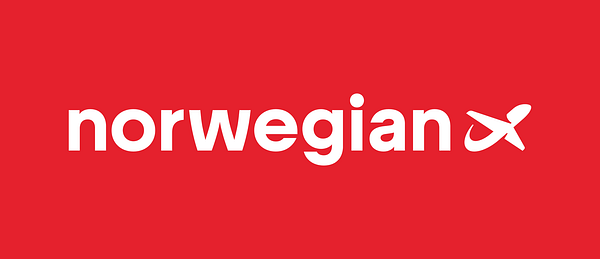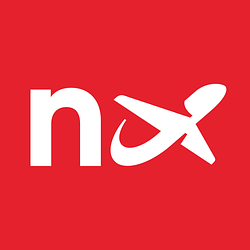
Press release -
Norwegian Reports 2011 Results: Strong Passenger Growth, High Load Factor and Fleet Renewal
Norwegian (NAS) today reported its fourth quarter and full year 2011 results. The company experienced a passenger growth of 20 percent and carried 15.7 million passengers in 2011. The load factor increased by 2 percentage points to 79 percent. The year is also characterized by fleet renewal, leading to better earnings (EBITDAR) for the company. New aircraft also left the company with fuel savings of 153 MNOK.
“The underlying operation was very good throughout 2011, even though a seasonally weaker fourth quarter was particularly affected by tough competition, soaring fuel prices and costs related to the phasing-out of older aircraft. Both the full year and fourth quarter results show a significant growth both in terms of passenger figures, capacity and load factor, Our improved earnings prove that Norwegian benefits from new, larger, more cost-efficient aircraft. In the fourth quarter we see a flatter trend, but the overall conclusion is that the fleet renewal gives Norwegian a major competitive advantage in a climate where several airlines are under pressure due to aging fleets and high fuel prices. We are also able to offer our customers an improved travel product, which reflects our strong passenger figures,” said CEO Bjørn Kjos.
Cutting Costs
The company’s earnings before depreciation and leasing (EBITDAR) was more than 1.5 BNOK in 2011, a considerable improvement compared with previous year. The fourth quarter figure was 216 MNOK, which is stable compared with the same quarter in 2010.
The company’s unit costs – excluding fuel – were sliced by 11 percent from 2010 to 2011. Even including fuel, the overall costs were reduced considerably.
By continuously introducing more brand new, larger and more cost-efficient aircraft to its fleet, Norwegian will continue to reduce its unit costs. Norwegian took delivery of 16 brand new Boeing 737-800s in 2011 while nine older aircraft exited the fleet.
Norwegian’s total result (EBITDA) was 710 MNOK in 2011 and 1.7 MNOK for the fourth quarter. The company’s net profit after taxes was -133 MNOK. The 2011 net profit was 122 MNOK.
Key Figures Full Year 2011 (2010)
Passengers: 15.7 mill (13 million)
Revenue: 10.5 BNOK (8.6 BNOK)
Load Factor: 79 percent (77 percent)
EBITDAR: 1.5 BNOK (1.2 BNOK)
EBITDA: 710 MNOK (397 MNOK)
EBIT: 416 MNOK (210 MNOK)
EBT: 167 MNOK (243 MNOK)
Net Result: 122 MNOK (171MNOK)
Key Figures Fourth Quarter 2011 (Q4 2010)
Passengers: 3.99 million (3.32 million)
Revenue: 2.5 BNOK (2.1BNOK)
Load Factor: 79 percent (77 percent)
EBITDAR: 216 MNOK (214 MNOK)
EBITDA: 1.7 MNOK (14.2 MNOK)
EBIT: -85.3 MNOK (-31.8 MNOK)
EBT: -187.7 MNOK (-27.2 MNOK)
Net Result: -133.3 MNOK (-23.6 MNOK)
For more detailed information, please see pdf attached.
Contacts:
SVP Corporate Communications Anne-Sissel Skånvik, tel +47 975 54344
CFO Frode Foss, tel + 47 91 63 16 45
Topics
Norwegian Air Shuttle ASA, commercially branded “Norwegian,” is a public low-cost airline noted on the Oslo Stock Exchange. The company is the second largest airline in Scandinavia, and has a route portfolio that stretches across Europe into North Africa and the Middle East. With competitive prices and customer friendly solutions and service, the company has experienced significant growth over the previous years. With more than 13 million passengers in 2010, Norwegian is the 3rd largest low-cost airline in Europe. Norwegian currently operates 61 aircraft on 297 routes to more than 100 destinations and employs approximately 2 500 people.


